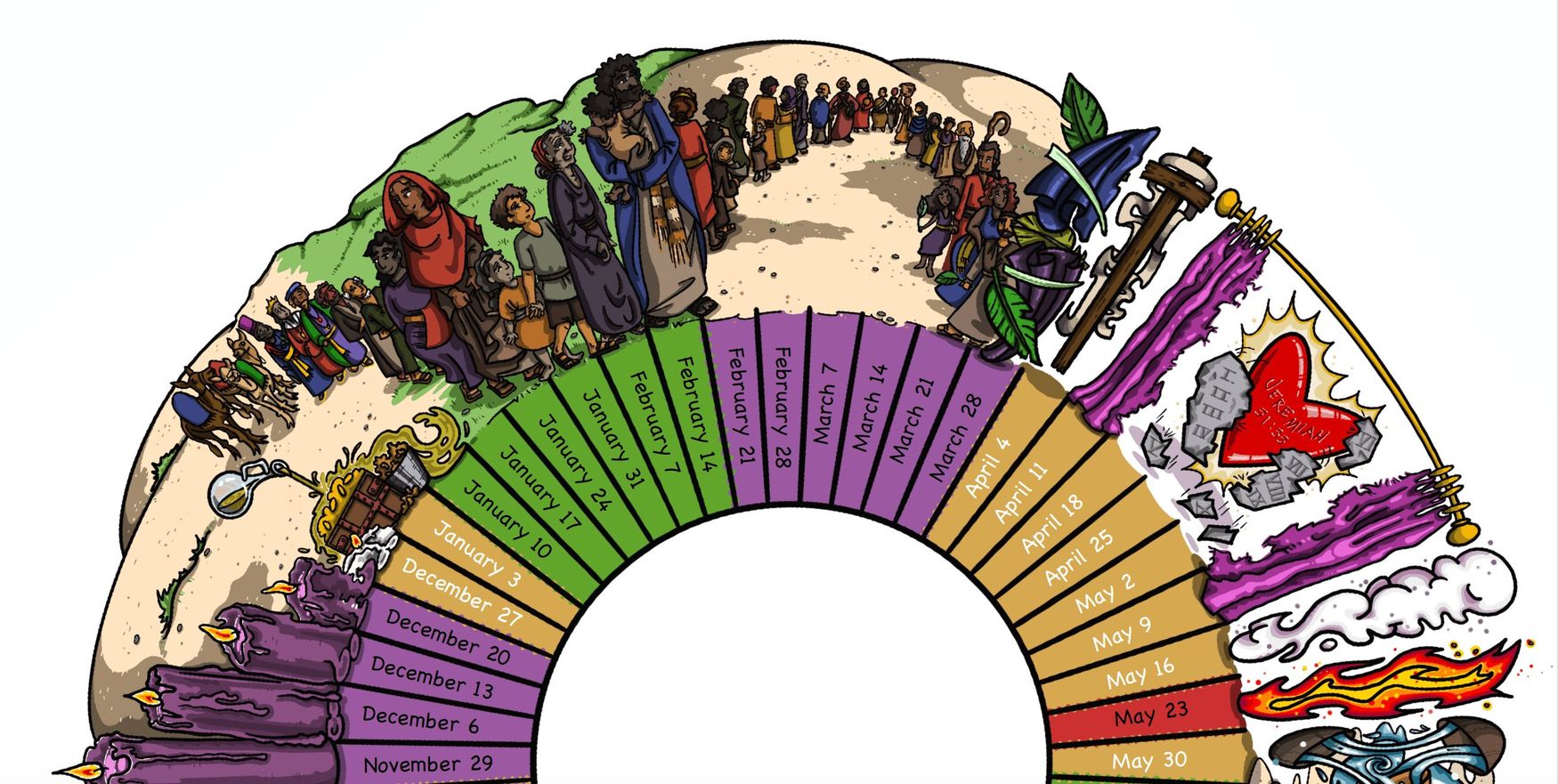
What is the Liturgical Calendar? The Liturgical Calendar is a schedule used by many Christian denominations to organize their yearly worship, celebrations, and observances. It helps believers remember and honor significant events in the life of Jesus Christ and the saints. This calendar includes seasons like Advent, Christmas, Lent, Easter, and Ordinary Time. Each season has its own themes, colors, and traditions. For example, Advent is a time of preparation for Christmas, while Lent is a period of reflection before Easter. Understanding the Liturgical Calendar can deepen one's faith and enhance participation in church activities.
What is the Liturgical Calendar?
The liturgical calendar is a schedule used by many Christian denominations to organize and celebrate various religious events and seasons throughout the year. It helps believers remember and honor significant moments in the life of Jesus Christ and the saints.
- The liturgical calendar is divided into different seasons, each with its own themes and colors.
- It begins with Advent, a season of preparation for the birth of Jesus.
- Christmas follows Advent, celebrating the birth of Jesus Christ.
- Epiphany marks the visit of the Magi to the baby Jesus.
- Lent is a 40-day period of fasting and repentance leading up to Easter.
- Holy Week, the final week of Lent, includes Palm Sunday, Maundy Thursday, Good Friday, and Holy Saturday.
- Easter celebrates the resurrection of Jesus from the dead.
- Pentecost occurs 50 days after Easter and commemorates the descent of the Holy Spirit on the apostles.
The Colors of the Liturgical Calendar
Each season in the liturgical calendar is associated with specific colors that symbolize different aspects of the Christian faith.
- Purple is used during Advent and Lent, symbolizing penance and preparation.
- White or gold is used during Christmas and Easter, representing joy and purity.
- Green is used during Ordinary Time, symbolizing growth and life.
- Red is used on Pentecost and for the feasts of martyrs, symbolizing the Holy Spirit and the blood of martyrs.
- Blue is sometimes used during Advent in some traditions, symbolizing hope and expectation.
Special Days and Feasts
The liturgical calendar includes many special days and feasts that commemorate important events and figures in Christianity.
- The Feast of the Immaculate Conception celebrates the belief that Mary was conceived without original sin.
- The Feast of the Annunciation marks the angel Gabriel's announcement to Mary that she would bear the Son of God.
- All Saints' Day honors all saints, known and unknown.
- All Souls' Day is a day of prayer for the souls of the faithful departed.
- The Feast of the Transfiguration commemorates Jesus' transfiguration on Mount Tabor.
- The Feast of the Assumption celebrates the belief that Mary was taken up into heaven body and soul.
- The Feast of Christ the King celebrates Jesus Christ as the ruler of the universe.
The Role of Saints in the Liturgical Calendar
Saints play a significant role in the liturgical calendar, with many days dedicated to their memory and contributions to the faith.
- Saint Patrick's Day, celebrated on March 17, honors the patron saint of Ireland.
- Saint Francis of Assisi's feast day on October 4 celebrates his love for animals and nature.
- Saint Nicholas' Day on December 6 honors the saint known for his generosity and kindness.
- Saint Joseph's Day on March 19 celebrates the foster father of Jesus and the patron saint of workers.
- The Feast of Saint Peter and Saint Paul on June 29 honors the two apostles who were instrumental in spreading Christianity.
The liturgical calendar serves as a guide for Christians to live out their faith throughout the year, remembering and celebrating the key events and figures that shape their beliefs.
Final Thoughts on the Liturgical Calendar
Understanding the liturgical calendar offers a deeper appreciation for the rhythm and flow of the Christian year. This calendar, rich in tradition and symbolism, guides believers through seasons of anticipation, celebration, reflection, and renewal. Each period, from Advent to Pentecost, holds unique significance, shaping the spiritual journey of millions worldwide.
By marking these sacred times, the liturgical calendar connects the faithful to centuries of Christian heritage. It serves as a reminder of the life, death, and resurrection of Jesus Christ, anchoring the community in shared beliefs and practices. Whether you're a devout follower or simply curious, exploring the liturgical calendar can enrich your understanding of Christian traditions.
So next time you see a date marked on this calendar, you'll know it's more than just a day—it's a part of a larger spiritual tapestry.
Was this page helpful?
Our commitment to delivering trustworthy and engaging content is at the heart of what we do. Each fact on our site is contributed by real users like you, bringing a wealth of diverse insights and information. To ensure the highest standards of accuracy and reliability, our dedicated editors meticulously review each submission. This process guarantees that the facts we share are not only fascinating but also credible. Trust in our commitment to quality and authenticity as you explore and learn with us.


